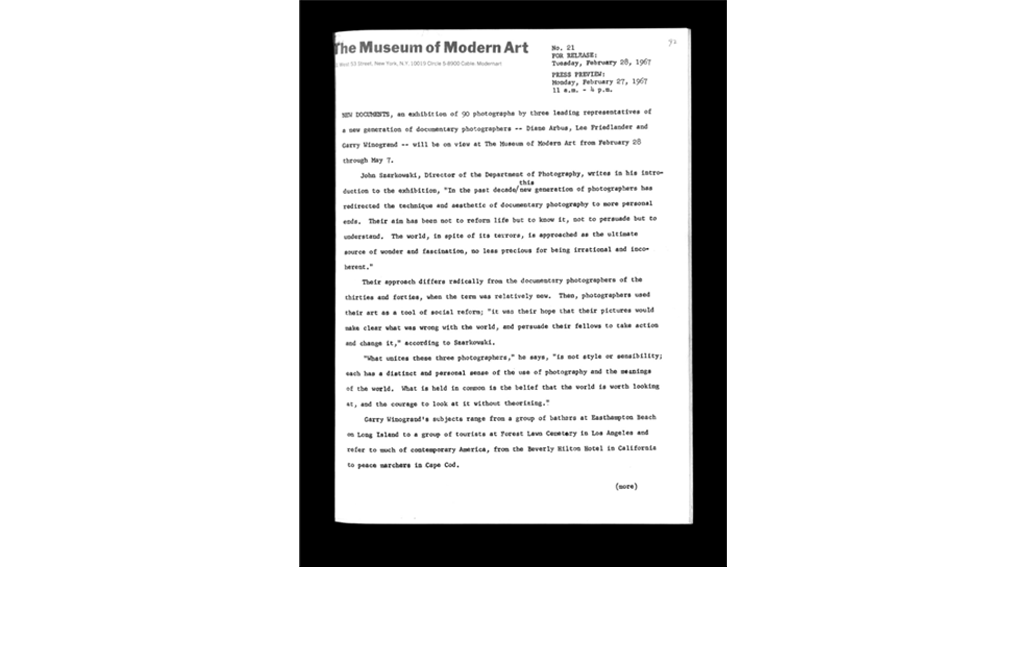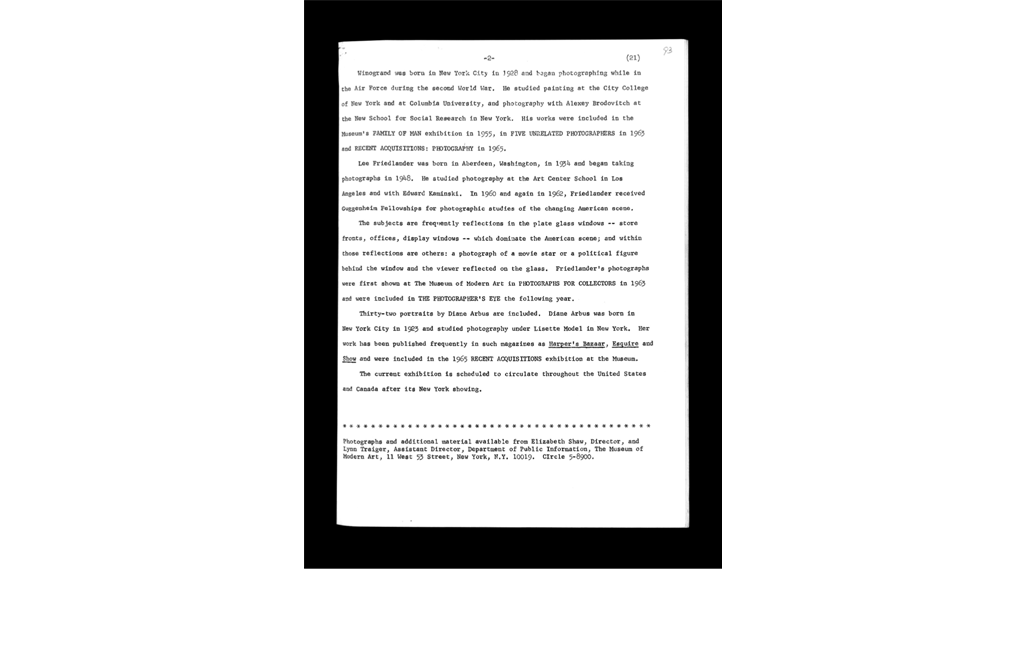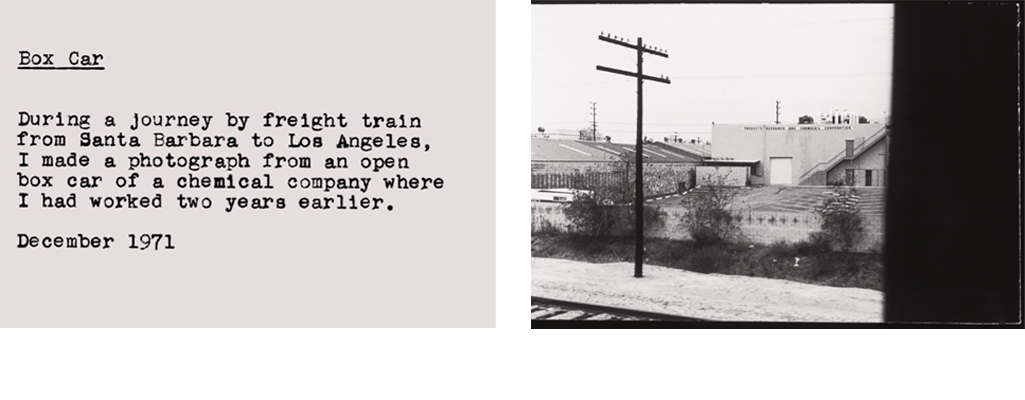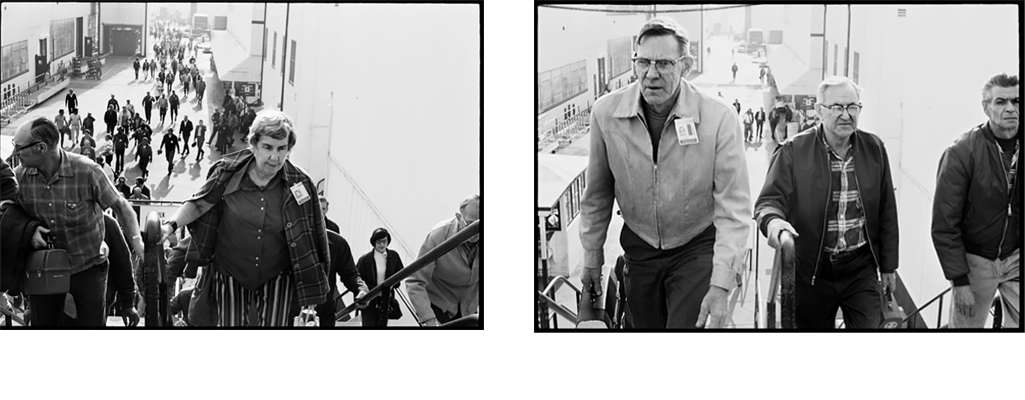Action, Documentation, Documentary
Huffa Frobes-Cross
The Early Photography of Allan Sekula, Martha Rosler, Fred Lonidier and Phil Steinmetz
On May 4, 1972, a group of 1,200 people marched on the 11th Naval District Headquarters in downtown San Diego, accompanied by “several musicians (and) some federal and local agents.”{1} The event, which was part of a “nationwide moratorium called to protest Nixon’s escalation of the war in Indochina,” was timed to coincide with the second anniversary of the Kent and Jackson State shootings.{2} After they reached the Naval District Headquarters “nearly a hundred of the protestors sat down in the entrance, blocking it.”{3} A few hours later, the police “declared it an unlawful assembly” and told the crowd to move on. When the protesters refused, the police began arresting them. In the words of one reporter, “With a crowd of 200 cheering them as they were led into a County Sheriff’s bus and SDPD paddy wagons, those arrested were taken to the county jail and charged with trespassing on federal property, unlawful assembly and failure to disperse.”{4} The artist and current University of California, San Diego MFA student, Fred Lonidier was there, having participated in the march, but he did not join those who blocked the entrance to the headquarters. He had his camera with him, as he nearly always did. At the time, he was also a few days away from hanging his MFA thesis show. As the police descended on the protesters, Lonidier was neither concerned nor surprised. By 1972, he says, “This has become a regular thing, the police knew what to expect and so did the protesters.”{5} Lonidier had been both attending and photographing demonstrations since the mid-1960s and was well acquainted with their almost ritualized rhythms. One part of this familiar routine was the police documentation of those arrested. So, as Lonidier tells it, “When I saw a policeman lining up to take photographs, I wondered what would happen if I took the photos. So, I decided to step behind him and start taking photographs myself.”{6} He began shooting with an unused roll of 35mm film and stopped when the roll was finished. The contents of that roll would be displayed days later at his thesis show as 29 Arrests: Headquarters of the 11th Naval District, May 4, 1972, San Diego (1972).
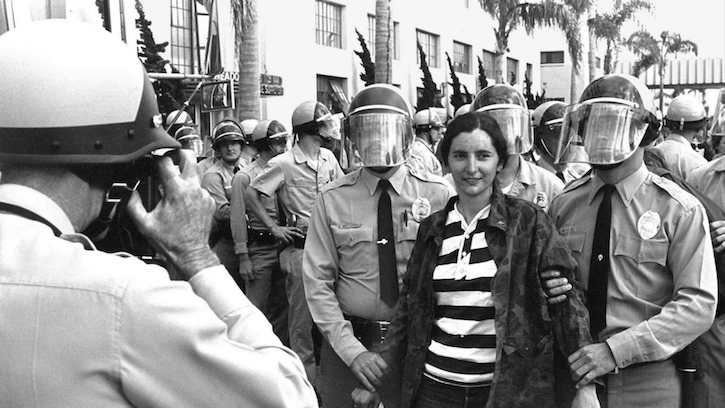 figure 1. From 29 ARRESTS: HEADQUARTERS OF THE 11TH NAVAL DISTRICT, MAY 4, 1972, SAN DIEGO, Fred Lonidier (1972).
figure 1. From 29 ARRESTS: HEADQUARTERS OF THE 11TH NAVAL DISTRICT, MAY 4, 1972, SAN DIEGO, Fred Lonidier (1972).
Positioned behind the officer, Lonidier used his camera to intervene within the relationship between the protesters and their recording by the police, providing an opportunity for them to appear in something beyond a criminal database. The work proposes new relationships between Lonidier, the police officers, the protesters, and when later displayed in the UCSD gallery, another viewing public. Since 1969, UCSD had been a major site of anti-war activism, with nearly continual protests throughout each school year, including building occupations, marches and student strikes. By displaying 29 Arrests on campus, Lonidier was making those protesters visible to those who would identify and sympathize with their actions.
In 29 Arrests, the act of documentation undermines the representational authority of the police by producing the protesters as subjects for the public that passes through the gallery.{7} The work utilizes the same documentary function of the photograph that underlies the police archive, but places his subjects before a sympathetic public engaged in the anti-war movement, where they can appear, not as petty criminals, but as protestors.
At the time he produced 29 Arrests, Lonidier was one of the core members of an informal working group made up of students and faculty at the UCSD Visual Arts program that also included Allan Sekula, Martha Rosler and Phil (later Phel) Steinmetz. Sekula and Rosler entered the UCSD MFA program in 1972, the same year that Lonidier graduated and joined Steinmetz on the Arts faculty. The group met nearly every week for several years, critiquing each other’s work, discussing potential projects and just generally “batting ideas around,” in Rosler’s words.{8} Film critic and UCSD professor Manny Farber referred to them as “that Marxist cabal” down there in the darkroom.{9} They coalesced around a shared interest in imagining artistic practice as political practice. With the exception of Steinmetz, each had begun producing photographs and making art from within the antiwar, labor, civil rights and women’s liberation movements. During the same period, Rosler had been making photomontages that she distributed as flyers at marches. Sekula, the youngest of the core group, had been attending protests since high school, and making performative protest works since his years as an undergrad at UCSD. Sekula, Rosler and Lonidier became artists as activists, not so much pursuing these two engagements side by side as pulling each through the demands of the other. They sought to speak intelligibly within the discourses of leftist activist movements, making work legible alongside underground newspapers, flyers and protest placards, and remain legible within the institutional spaces of the gallery and the modern art museum. In their early attempts to mediate between the demands of these discourses they turned increasingly towards historical forms and methods drawn from documentary photography.
Working in a university context, relatively isolated from the central hubs of the art world, the group developed a model of political artistic practice that was distinct from the self-critical explorations of post-Minimalism, Conceptual art and what would soon become institutional critique. The UCSD Visual Arts department, which had accepted its first students only a few years earlier in 1967, was one of several programs offering MFA degrees founded throughout the UC system in the mid to late 1960s.{10} The head of the department, the poet and critic David Antin, actively encouraged interdisciplinary programs of study, focusing much less on developing specific artisanal skills than providing a broad, intellectually rigorous education. The group embraced this vision, taking classes across a range of departments, and developing connections both on and off campus among radical journalists, feminist groups and leftist scholars, as well as other artists. Rosler and Sekula participated in a literary theory reading group run by Fredric Jameson, and both were close with the philosopher Herbert Marcuse. All four artists attended dozens of lectures by visiting artists, scholars and filmmakers including Jean-Pierre Gorin, Louis Marin and Angela Davis, among many others. Rosler was a member of the San Diego-based Women’s Liberation Front (WLF) and contributed some of her photomontages to the local feminist publication, Goodbye to All That!.{11} The artists also were friendly with the editorial staff of the Street Journal, an important underground newspaper based in San Diego.{12} The public that gathered for their campus shows were made up of activists from the San Diego area, as well as students and faculty in the humanities, social sciences and visual arts. With the exception of a few faculty members, influential members of the commercial art world, whether gallerists, critics or prominent artists, rarely attended their exhibitions.
In part responding to the demands of this diverse public and drawing on their wide ranging intellectual background, these artists were less concerned with exploring the conditions of possibility, and attendant limitations, of art production within the institutional art world than with finding ways to dislodge its place as an exclusive and determining site. They sought models of aesthetic practice that existed between multiple sites and multiple publics. Some of their earliest projects eschewed the gallery space entirely, but they increasingly explored ways to produce work that would exist between the gallery and other sites, speaking to art world insiders, activists and academics.
Documentary photography held a unique appeal for these artists because of its complex and contradictory status, as a practice defined both by its various pragmatic, social, political uses, and, increasingly, by its integration into the canon of modernist art. Photographs made for the Farm Security Administration (FSA) as part of the United States government’s response to the Great Depression and for the housing and labor reform movements of the early 1900s had entered the collection of the Museum of Modern Art (MoMA), not as historical documents but artworks valued for their formal innovations.{13} Simultaneously, artists like Lee Friedlander, Garry Winogrand, and Diane Arbus, who were all featured in the 1967 MoMA exhibition “New Documents,” were appropriating the methods and forms of these earlier documentary photographs in the production of work destined primarily for art publications and gallery walls.{14} Documentary photographs, and their aesthetic norms, had become legible within galleries and museums as artworks, regardless of their other lives as part of practices and within institutions with little connection to the production or exhibition of art.
Photography, as Sekula would argue, is defined through the “various representational tasks” it comes to serve.{15} As he articulated in his 1981 essay, “The Traffic in Photographs,” photography is constantly channeled through incompatible discourses, functioning at one moment as scientific fact and another as aesthetic expression.{16} Nowhere was this more evident than in the constantly shifting status of documentary photography. As both Sekula and Rosler would argue, the formalist, modernist appropriation of documentary photography carried the danger of obscuring the work’s other social functions.{17} However, if the documentary photograph’s aesthetic existence is not seen as exclusive, and if its other functions are somehow made visible even within the gallery, its intelligibility within and beyond the discourses of art carried the potential to reach a disparate set of publics. Thus, while critical of the modernist erasure of a photograph’s instrumental uses, these artists saw documentary photography as a way of making work that could exist between its multiple uses, using the documentary form to speak within several discourses simultaneously.
These artists’ shared embrace of documentary first emerged from a struggle to mediate between their political activism and artistic practice. This interest can be traced throughout the period between 1970 and 1972, from the time of Sekula’s first protest pieces at UCSD, which also involved Lonidier, through the critical three pieces Sekula produced as a student in Steinmetz’ photography class in the winter term of 1971-1972, and Lonidier’s 1972 MFA thesis show in which 29 Arrests was first shown. In looking at this work, some of the earliest produced during the group’s time together, it is possible to observe the emergence of documentary methods that would characterize much of their output throughout the 1970s.
****
Early in the morning of May 26th, 1970, Lonidier remembers walking across campus when “Allan (Sekula) grabbed me…and hauled me over to (Visual Arts professor) Newton Harrison’s studio.”{18} At the time, UCSD was in the midst of perhaps the most turbulent month in its short history. The entire University of California system had been officially shut down by Reagan and unofficially shut down by students striking across the state and the country to protest Nixon’s decision to invade Cambodia and the subsequent shootings at Jackson and Kent State. Throughout May there had been nearly continual eruptions on campus. Sekula, Rosler and Lonidier had been involved in many of these events, and Lonidier correctly assumed that Sekula was pulling him into some sort of political action.
When Lonidier arrived at Harrison’s studio, the floor was covered in plastic sheeting and littered with rags, paper and splashes of various viscous substances. Sekula, Harrison and several others, “egged on” by social theorist Anthony Wilden, had begun coating thirteen military uniforms in paint and mud and stuffing them with paper, sand, and “reeking cow guts” procured from a local slaughterhouse.{19} Delivered on gurneys, the loaded bags were laid out in a neat row in Revelle Plaza at the center of campus, “as if they were body bags to be dropped off or picked up by a helicopter.”{20}
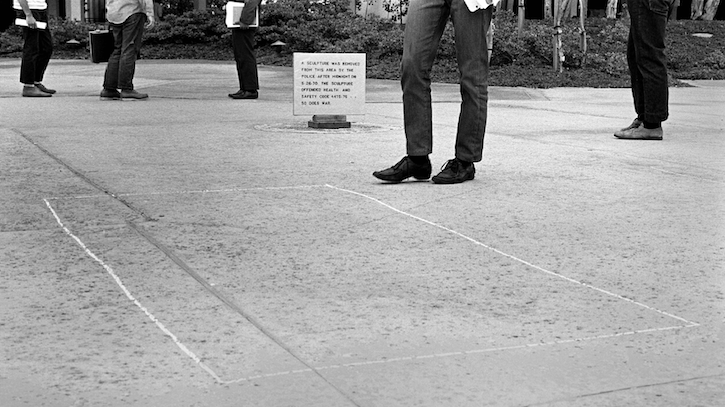 figure 5. From BODY BAGS, Fred Lonidier (1970).
figure 5. From BODY BAGS, Fred Lonidier (1970).
As people began to notice the piece, according to Harrison, they were horrified. “Who did this? It’s awful,” one exclaimed. Another apparently threw up.{21} Authorities eventually dismantled the piece, carting the impromptu sculptures to the university’s cadaver locker to make sure they weren’t human corpses. Once it was clear that only cow carcasses were involved, they were thrown into the university incinerator. The sand melted into liquid glass and destroyed the machine.{22} The next day a sign was placed on the plaza that read, “A SCULPTURE WAS REMOVED FROM THIS AREA BY THE POLICE AFTER MIDNIGHT ON 5-26-70. THE SCULPTURE OFFENDED HEALTH AND SAFETY CODE 4475- 76 – – SO DOES WAR.” In front of the sign were a series of rectangular chalk outlines marking the spots where each bag had sat.
Body Bags (1970) would have been immediately intelligible to any member of the UCSD community as an antiwar protest. Revelle Plaza was perhaps the most frequent site for campus activism, and body bags, caskets, and coffins had been used in antiwar and civil rights protests around the country for years.{23} In fact, caskets were part of a small protest on Revelle Plaza just a few days before Body Bags.
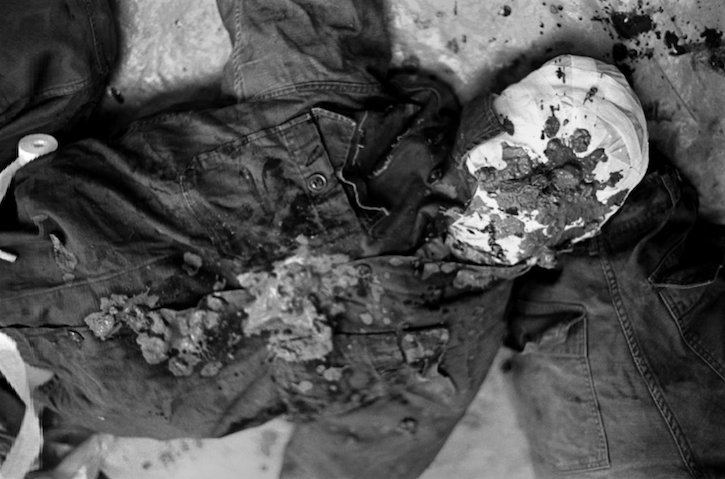 figure 6. BODY BAGS, Fred Lonidier (1970).
figure 6. BODY BAGS, Fred Lonidier (1970).
At the same time, the work spoke intelligibly within the language of contemporaneous avant-garde art. In a generic sense, it was a typical example of the participatory performative art prevalent on university campuses during these years. Allan Kaprow’s ideas, as well as those of fellow Fluxus affiliated artists Robert Watts, Alison Knowles and Ken Friedman, about the artwork as an open ended, often collaborative event, were central to the flowering of arts education at newly founded universities around California in the late 1960s and early 1970s.{24} Kaprow had taught at UCSD before taking a position at CalArts in Valencia and created several works on campus throughout the late 1960s and 1970s. By redeploying the relatively familiar form of late 1960s participatory performative art, Body Bags functioned as a protest, while articulating itself intelligibly as an art work. Neither of these roles were stable nor definitive. Body Bags’ public was merely all those who encountered it as they walked across Revelle Plaza, itself a site of protests, performances and memorials, which provided no clear frame through which to view the work.
Although Lonidier did not consider himself a participant in the piece at the time, it is only through his photographs that the work remains more than a fleeting trace in the art historical archive.{25} The work may have appeared on Revelle Plaza already as, among other things, art, but it is visible as such today due, in large part, to these images. This relationship between a performance, event or construction located in a specific space and time and its documentation was intrinsic to much post-Minimalist, performance, and Conceptual art. Perhaps the most well-known description of this idea was Robert Smithson’s notion of site and non-site. Smithson’s writing was familiar to Sekula, who noted that the older artist’s work impacted Sekula’s early thinking about sculpture.{26} Lawrence Alloway later described the site/non-site relationship as essentially the relationship between a signifier and signified.{27} The site only comes to meaning, to enter into discourse, through the creation and display of the non-site. Site-specific works, conceptual gestures and fleeting performances were given more permanent form through their photographic documentation, which, within the exhibition context became synonymous with the work itself.
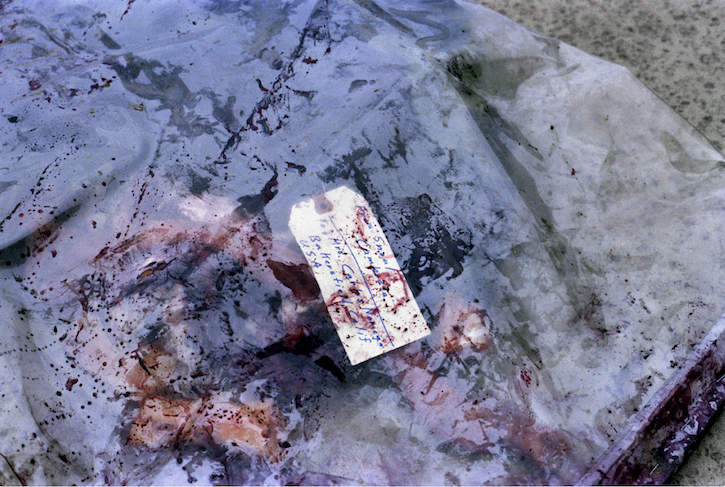 figure 8. BODY BAGS, Fred Lonidier (1970).
figure 8. BODY BAGS, Fred Lonidier (1970).
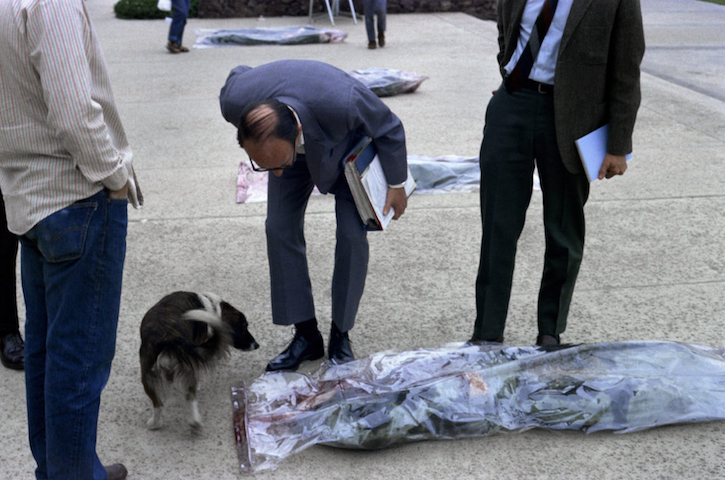 figure 9. BODY BAGS, Fred Lonidier (1970).
figure 9. BODY BAGS, Fred Lonidier (1970).
Sekula would explicitly adopt this strategy in three works that relied on this definition of the work as split between site and non-site, signifier and signified.{28} These pieces both consisted of nearly private actions, which were then photographed for later exhibition. Unlike Body Bags, they had no public prior to their existence as photographs, and their reproduction was not a secondary act beyond the works themselves, but the sole way in which they would appear. The documentation of the work had become the work itself.
In Box Car (1971), Sekula played the role of a “hobo” riding a train taking photographs out of the open door of “a rail-freight wagon as it passed near a chemical research and development plant” where he had worked as a technician in 1969. For Meat Mass (1971), the second of the two pieces, Sekula took on the role of a thief, going to a local Safeway and stealing some of their most expensive cuts of meat, later throwing them onto a freeway. At the time Safeway was facing boycotts by the United Farm Workers for selling produce picked by non-union ‘scabs.’{29} Meat prices were also at historic highs, due to both inflation and decreased supply.{30} Sekula targeted a commodity being sold by a company fighting against labor rights and whose price had become subject to the seemingly irrational effects of global markets. Robbed of their role in earning income for Safeway, they were transformed into minor obstacles to the flows of transit upon which the California economy depended. It was a rigorous, if entirely symbolic, anti-capitalist gesture. In Box Car and Meat Mass, the acts themselves constituted a minor disruption of either capitalist exchange or the boundaries of private property. However, they only became publicly visible through their documentation. They inverted the terms of Body Bags, which played a public, political role during its temporary existence on Revelle Plaza with no planned public display of its photographic documentation.
The third piece made during this period was Untitled Slide Sequence (1971). For this, Sekula drove to the San Diego General Dynamics Convair Division factory about fifteen minutes from UCSD campus. General Dynamics was a founding funder of UCSD, and recruited actively at the university, and occasionally offered faculty dual appointments at the company.{31} As a weapons manufacturer, the company was at the center of ongoing protests around UCSD’s involvement in the Vietnam war.
Arriving in the late afternoon at “the end of the day shift,” Sekula stood, as he later said, “on a pedestrian overpass…more or less where a militant selling newspapers would stand.”{32} He then began photographing the workers as they left the factory, and continued to do so until he was kicked out by security. He explained later that he had hoped to provoke this interruption. He stood not only in the place of a “militant” but also, as he said, “inside company property, so that the project ended when the guards detected my trespassing.”{33} Sekula instrumentalized the threat his camera apparently posed, producing a document not just of everyday factory work, but of the resistance such documentation produces from the agents of that factory’s disciplinary regime. In Untitled Slide Sequence the action and documentation are no longer split, rather it is the documentation that constitutes the action.
Unlike Meat Mass and Box Car, Sekula does not directly appear in any of the images and the events being documented are not primarily of his own creation. As Sekula would later recall, at this point, “documentation was more interesting than the action itself.”{34} If Meat Mass and Box Car reversed the terms of Body Bags, making documentation primary rather than secondary, with Untitled Slide Sequence the nature of that documentation begins to shift. This is no longer simply a documented performance, but the documentation of an event that was only partially provoked by Sekula. Here, the documentation begins to become something like documentary:
“I became less interested in the petty criminal and transient as romantic disguises, and more interested in documentation, especially in the ambiguity of the documentary function and the esthetic modesty and worldliness of the photograph.”{35}
In this quote Sekula charts the development of his work between 1971 and 1972 in the semantic shift between “documentation” and “documentary.” The use of photography as documentation of nearly private “action-art” opens onto the possibility of documentary. Body Bags relied on, without integrating, later mediations for its continued visibility. In Meat Mass and Box Car this mediation becomes integral, but the acts being documented are produced only for their latter photographic existences. With Untitled Slide Sequence, the photographs no longer merely document an individual private act, but the results of an event only partially produced by Sekula’s presence. They are the trace of a conflict between antagonistic social forces between Sekula as the alleged trespasser and potential political troublemaker and the security regime of a military-industrial facility. Sekula has moved from using photography to document his own actions, in the vein of contemporaneous Conceptual and post-Minimalist artists, to using photography to document the complex social forces in the world around him, engaging and conceptually expanding the long tradition of social documentary photography.
Three months later, Lonidier would extend this logic in 29 Arrests. The production and exhibition of the work serves to undermine the authority of the police photographic archive, and give those arrested another public within the gallery. This is an integral part of 29 Arrests’ intervention in the conflict between police and protesters. 29 Arrests utilizes photographic documentation as a way to establish a relationship between the exhibited work and the public that passes through, what Smithson would call, the non-site of the gallery and those at the site of its creation. It acts as a form of mediation between sites and publics. That mediation, its form as a kind of documentary, is now constitutive, not only of its art historical, but its political existence. Lonidier’s documentation of the social relations between himself, the police and the protesters both serves to produce the work and functions as an intervention within those relations.
****
In the four years after Untitled Slide Sequence and 29 Arrests, Lonidier, Rosler, Sekula and Steinmetz made an array of projects that engaged with documentary forms and methods. Steinmetz would produce a long series of photo-text works including Indian Fighter (1973), Oil, Profit, Control (1973), and his vast autobiographic, autoethnographic study of his family Somebody’s Making a Mistake (1976). Sekula would make his own autobiographic, autoethnographic work Aerospace Folktales (1973), and two other important photo-text works Meditations on a Triptych (1973- 1978) and This Ain’t China (1974). Rosler would produce The Bowery in two inadequate descriptive systems (1974-1975), whose juxtaposition of alcohol-related slang and photographs of empty storefronts on the Bowery explicitly engaged with the long history of reformist documentary in New York City. Finally, Lonidier would complete Health and Safety Game (1976), a photo-text work incorporating extensive research and original fieldwork that documents the attempts of those suffering from workplace injury to get health care and compensation, and which was exhibited in both galleries and union halls. In most of these cases, the work’s incorporation of documentary photography opens the way for its intertwined role in specific political struggles and the institutional art world. Health and Safety Game, for example, used documentary photographs and accompanying text to provide an informational resource for workers trying to deal with the bureaucracy surrounding workplace injury. At the same time, its photo-text format situated it securely within the realm of contemporaneous photography and Conceptual art.
The established appropriation of otherwise instrumental photographs into the archive of the modern art museum opened an avenue for imagining another kind of political artistic practice. Rosler would later describe her work as “a series of decoys; a work briefly masquerades as one thing, following a given form, until you soon realize that something is amiss.”{36} Documentary had appeared within the museum as a kind of decoy, even if it was not always presented as such. This provided an alternative way of thinking about a relationship to the art institution, as a place to exhibit, but not as a place through which one’s work is entirely defined. Rather than trying to disrupt or remake the institution, they attempted to fit in, or perhaps better, sneak in, so that, under the guise of recognizable current art something else might be going on.
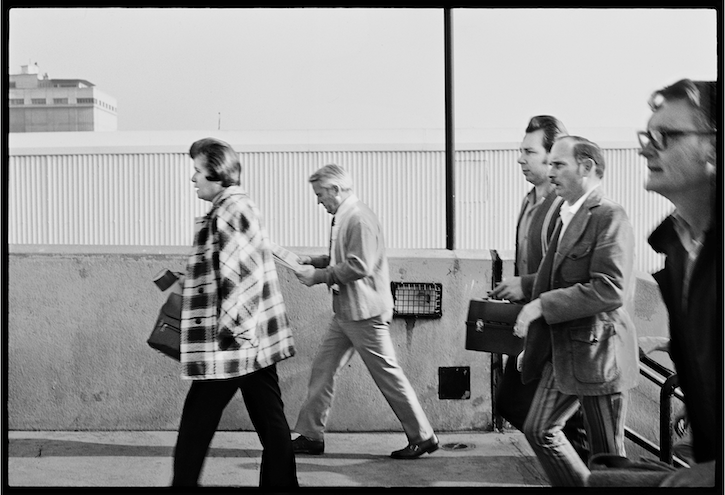 figure 12. from UNTITLED SLIDE SEQUENCE, Allan Sekula (1971).
figure 12. from UNTITLED SLIDE SEQUENCE, Allan Sekula (1971).
***
Rosler’s The Bowery in two inadequate descriptive systems, a piece made specifically made for the gallery-going public, is perhaps the clearest example of this strategy.{37} It consists of a series of photographs, largely of shop fronts in the Bowery in downtown Manhattan set next to photographs of typewritten pages filled with slang terms for drunk, alcoholic and empty bottles of booze. It evoked established forms of both ‘modernist-approved’ documentary photography and Conceptual art. Her direct shots of storefronts recalled Walker Evans’ 1930s photographs as well as Evans’ recuperation within Friedlander’s more recent work. Although not as precisely organized as either photographer’s images, Rosler’s photographs similarly utilize the flat planes of building facades and their attached signs to create geometric compositions that juxtapose the more abstract forms of blank walls with the textual markings of signs and graffiti. As the sequence progresses, as in books like Evans’ American Photographs (1938) or Let Us Now Praise Famous Men (1941), there is a formal and thematic development between the photographs, which become gradually more and then less cluttered before ending on two shots, not of storefronts, but empty bottles on the ground. The Bowery also closely adheres to the generic confines of the photo-text work, a form which had been recognizably established since the late-1960s work of conceptualists like Joseph Kosuth. As an extended set of direct, repeating photographs largely of a single element of the built environment, they echoed the systematic photographic series of both Ruscha and Bernd and Hilla Becher. As Rosler later put it:
(F)rom its inception I felt that The Bowery was a work for art galleries and museums. … It was meant as an art work, hanging on the wall– why else would I bother calling it “inadequate?” Who cares about inadequacy of representation? The general public doesn’t care about inadequacy, the art world and artists care about adequacy of representational systems.{38}
In choosing to photograph the Bowery, and to allude to the problems of alcoholism and dispossession, Rosler was tying her work to some of the first examples of social documentary, in particular Jacob Riis’ late 19th and early 20th century photographs of the downtown New York poor, and Hine’s later work in the same area.{39} The Bowery’s transient population had remained a subject of documentary photographers into the present day, with Michael Zettler’s sentimental series The Bowery published as a successful book in 1975.{40} Rosler would identify much of this work as the “find-a-bum school of photography.” As Rosalind Deutsche and Cara Gendel Ryan argue in a 1984 essay that also includes a brief early mention of The Bowery, “the bum” is a an often aestheticized, and depoliticized figure, whose naturalized, mythic representation of poverty moves “poverty itself…out of our field of vision.”{41} The process of gentrification, which necessarily displaces the poorest, “useless” residents of a neighborhood, “is aided and abetted,” Deutsche and Ryan argue, “by an ‘artistic’ process whereby poverty and homelessness are served up for aesthetic pleasures.”{42} Moreover, this process of gentrification, as Rosler would later describe in detail in her 1990 book If You Lived Here and her 2013 essay collection Culture Class, was both driven by and partially responsible for the transformation of neighborhoods into centers of art world activity.{43} The Bowery erases this mythic image of “the bum,” replacing it with an unfolding list of slang terms related to drinking and the empty shots of storefronts. The viewer is given no overarching category through which to frame these two “inadequate descriptive systems.” The words and images, as Steve Edwards has discussed at length, do not inform one another like a typical photograph and its caption, but instead undermine one another.{44} Between these two mutually undermining descriptions, we are left not with an image, but a challenge to construct one. The representation of “the Bowery” and its populace becomes a problem, and a problem with immediate social consequences.{45}
In The Bowery, not only the production of the image but its specific existence within the galleries of the current institutional art world are integral to its political aims, turning an engagement with the history of documentary and the modish theoretical question of the “adequacy of representational systems” into a way of confronting a public directly implicated in the displacement of the poor.
In January 1975, Sekula published “On the Invention of Photographic Meaning” in Artforum. He wrote the essay, in part, over the winter, during which time he was living with Rosler in New York while she was making The Bowery. Photography itself, as Sekula describes in the essay, is not inherently located within a single discourse, nor does it, in and of itself constitute a single, unified language or medium. Its function is dependent on its use and legibility in those particular discourses in which it comes to serve as an utterance and to those particular publics to which it becomes addressed. The production of the photograph is thus always already a statement thrown out into a heteroglot environment, what he calls the “photographic discourse … within which the culture harnesses photographs to various representational tasks.”{46} The problem that Sekula identified with an “esthetist” approach to photography was its attempt to draw a “clear boundary…between photography and its social character” in order to establish it “as an art.” In turning toward documentary photography, Sekula, Steinmetz, Rosler, and Lonidier sought to take advantage of photography’s heteroglossia, which estheticism suppressed. They pursued this not in order to negate its existence as an art, but to imagine such an existence as only one of its “various representational tasks.” Escape is not the goal, but rather the ability to exist always between determinations.
Title Images: Untitled Slide Sequence (Allan Sekula, 1971).
{1} Daniel Buchbinder, “85 Arrested in War Protest,” Triton Times, May 5, 1972.
“Before the Bust,” Triton Times, May 9, 1972.
{2} A few days or weeks earlier there had been a meeting on campus called by the Women’s Liberation Front (WLF) during which the “35-40” participants decided to make May 4th “a day of resistance and struggle against the war.” It is possible that this was the origin of the May 4th protest. However, there is no further information on the planning of the protest, beyond this article reporting the meeting, so it is impossible to say with certainty.
Rosler was, of course, a member of WLF, and may have been at the meeting. Although I was unable to confirm whether or not that was the case.
“Anti-War Coalition,” Crazy Times, 1972.
“Arrested Group Releases Statement,” Triton Times, May 19, 1972.
Buchbinder, “85 Arrested in War Protest.”
{3} Ibid.
{4} Ibid.
{5} In fact, five Vietnam veterans had been arrested at the headquarters just a few weeks earlier after declaring themselves to be war criminals and demanding a response from the Naval authorities.
“Five Arrested At 11th Naval District Headquarters,” Triton Times, April 25, 1972.
Lonidier, Interview with author, 2014.
{6} Fred Lonidier, Interview with author, op cit.
{7} Benjamin Young convincingly argues that in reversing the “hierarchy of the police photographic situation,” 29 Arrests relies on the logic of civil disobedience. “Parallel to but distinct from police photography, another circuit of counter-publicity is set up between the sitters and the activist photographer (and implicitly the viewer), one that turns the sitters’ public law-breaking and arrest into an occasion to denounce the war and the military-police state.”
Benjamin Young, “Documents and Documentary: San Diego, c. 1973,” in The Uses of Photography: Art, Politics and the Reinvention of a Medium (San Diego, California; Oakland, California: Museum of Contemporary Art San Diego; University of California Press), 112-163. 131
{8} Benjamin Buchloh, “A Conversation with Martha Rosler,” in Martha Rosler: Positions in the Life World (Birmingham, England; Vienna, Austria; Cambridge, Mass.: Ikon Gallery; Generali Foundation; MIT Press, 1998), 23-55. 32
Other artists associated with this group for shorter periods of times include Brian Connell, Adele Schaules, Steve Buck, and Marge Dean.
{9} Steve Edwards, Martha Rosler: The Bowery in Two Inadequate Descriptive Systems (London: The MIT Press, 2012). 133 n. 89
Rosler also worked as a teaching assistant for Farber during her time at UCSD. A position that gave her exposure to a wide range of contemporary film.
{10} These included the arts programs at UCSD, University of California, Irvine and University of California, Santa Cruz.
{11} Between 1970 and 1971, she published her photomontages “Tron” (Amputee) (1967-1872) and “Vacation Getaway” (1967-1972) in Goodbye to All That!, a feminist publication founded earlier that year by some of the women who worked at the underground San Diego newspaper Street Journal.
{12} For more on the relationship between these artists and the underground press of the period see, Young, “Documents and Documentary: San Diego, c. 1973”
{13} These included FSA photographers like Dorothea Lange, Walker Evans, and Russell Lee, as well as earlier social reform photographers like Jacob Riis and Lewis Hine.
For a lengthier investigation of the relationship between photography and the modern art museum, see:
Christopher Phillips, “The Judgment Seat of Photography,” in The Context of Meaning: Critical Histories of Photography, ed. Richard Bolton (Cambridge, Mass: MIT Press, 1989), 14-47.
{14} John Szarkowski, MoMA’s influential Director of Photography, organized the “New Documents” exhibition, as well as exhibitions of earlier documentary photographers like Evans. With a nod to Clement Greenberg’s self-reflexive modernism, Szarkowski argued that any photography could be appreciated for its formal engagement with the medium of photography itself, regardless of the reasons for its production, or its subsequent uses. In exhibitions like “The Photographer’s Eye” (1964) and “From the Picture Press” (1973), images were drawn from disparate fields, some by trained artists, some by amateurs, many by professional photographers with little relationship to modern art. As Szarkowski wrote in his introduction to “The Photographer’s Eye,” “The pictures reproduced in this book were made over almost a century and a quarter. They were made for various reasons, by men of different concerns and varying talent. They had in fact little common except for their success, and a shared vocabulary: these pictures are unmistakably photographs. The vision they share belongs to no school or aesthetic theory, but to photography itself.” John Szarkowski, The Photographer’s Eye (New York: Museum of Modern Art, 1964). 2
{16} Allan Sekula, “The Traffic in Photographs.” Art Journal 41, no. 1 (Spring 1981): 15-25.
{17} Sekula, “On the Invention of Photographic Meaning.”
Martha Rosler, “Lee Friedlander’s Guarded Strategies,” Artforum 13, no.6 (February 1975): 46-53.
{18} Lonidier, interview with the author, op cit.
{19} Lonidier explained that Wilden was visiting at the time from Simon Fraser University and can be seen in some of his photos “bent over the ‘bodies’ while they were being worked on.” Harrison, when asked if Wilden participated in the performance said he was likely just “egging everybody on. He was an egger-onner.” Lonidier, Interview with author. op cit.
Newton Harrison, Interview with author, 2014.
Allan Sekula and Benjamin H. D. Buchloh, “Conversation between Allan Sekula and Benjamin H. D. Buchloh,” in Allan Sekula: Performance Under Working Conditions, ed. Sabine Breitwieser (Wein: Generali Foundation, 2003), 21-52. 30
Young, “Documents and Documentary: San Diego, c. 1973,” 127
{20} Harrison, Interview with author. op cit.
{21} Ibid.
{21} Harrison claims that the damage cost around $100,000.
Lonidier, Interview with author, op cit.
Harrison, Interview with author, op cit.
Karen Moss, “Beyond the White Cell: Experimentation/Education/Intervention in California Circa 1970,” in State of Mind: New California Art circa 1970 (Berkeley (Calif.): University of California Press, 2011). 158
{23} Just a couple of weeks earlier, protesters carried caskets during the largest march against the Cambodian invasion that year, held in Washington, D.C. on May 9. Two years later, a particularly ambitious protest by students and faculty at MIT involved in the creation of 1000 inflatable ‘bodies’ to match the then current 24-hour kill rate in Vietnam.
Tom Wells, The War Within: America’s Vattle over Vietnam (Berkeley, CA.: University of California Press, 1994). 438-444
“MIT Group Making ‘Bodies’ to Protest War,” Boston Globe (1960-1984), May 6, 1972.
{24} The development of Fluxus itself was strongly intertwined with the history of arts education in the university, with much of the early development of the movement occurring at Rutgers University during Kaprow and Watts’ time there. For more on the connection between Fluxus and the university see:
Geoffrey Hendricks, ed., Critical Mass: Happenings, Fluxus, Performance, Intermedia, and Rutgers University, 1958-1972 (New Brunswick, N.J.; London: Rutgers University Press, 2003).
Joan Marter, ed., Off Limits: Rutgers University and the Avant-Garde, 1957-1963 (Newark, N.J.: New Brunswick, N.J.: Rutgers University Press, 1999).
{25} Lonidier has repeatedly stated that he did not consider himself one of the collaborative participants in the piece. This may have been because he was not present during the class in which it was originally conceived. Sekula, by contrast, does cite Lonidier as a co-participant.
Lonidier, Interview with author. op cit.
Sekula and Buchloh, “Conversation between Allan Sekula and Benjamin H. D. Buchloh.” 21
{26} Sekula and Buchloh, “Conversation between Allan Sekula and Benjamin H. D. Buchloh.” 21
{27} Lawrence Alloway, “Sites/Nonsites,” in Robert Smithson: Sculpture, ed. Robert Hobbs (Ithaca: Cornell University Press, 1981).
{28} These works may have been made for a photography course taught by Steinmetz. Karolina Ziebinska-Lewandowska, “A Short Autobiography de Allan Sekula,” Les Cahiers Du Musée National D’art Moderne, no. 130 (Winter 2014-2015): 15-31. 17
{29} The boycotts, lead by Cesar Chavez and the United Farm Workers, continued in various forms from 1970 through 1974.
“Chavez Calls for Boycott of Chain in Lettuce Dispute,” Los Angeles Times, September 21, 1970.
Harty Bernstein, “Farm Workers Will End Safeway Stores Boycott: AFL-CIO in Return to Back Drive Against Grapes and Lettuce BOYCOTT,” Los Angeles Times, April 9, 1974. Rosler, Interview with author, 2014
{30} Inflation had become so extreme that President Richard Nixon had introduced price controls in August of the previous year. Safeway would even take out an ad around this time encouraging consumers to buy things other than meat, what it called “inflation fighters…(that) can be substituted for more expensive foods.”
Richard Nixon, Richard Nixon: Speeches, Writings, Documents (Princeton University Press, 2010). 217
“Two Supermarket Chains in the Capital Join Drive on Meat Prices,” New York Times, March 26, 1972.
{31} The university’s first round of funding came in the form of a $1 million grant from General Dynamics, the San Diego-based military contractor featured in Untitled Slide Sequence, the university’s founding was first justified through its ability to supply an educated workforce for the country’s military-industrial complex. The original offer from General Dynamics was made in 1956 to be given, in the words of General Dynamics president John Jay Hopkins, “over a period of the next few years provided that the University’s proposed plan is to establish an ‘Institute of Pure and Applied Physics’ and an ‘Institute of Mechanics’ at the La Jolla campus is adequately implemented.” When, in 1958, there was controversy surrounding the campus’ location, General Dynamics told the San Diego Union that their gift was dependent on the campus being built adjacent to the site of their new General Atomics subdivision. UCSD also received a $1.5 million gift from the Atomic Energy Commission in 1960. It is also worth noting that the first two chancellors of UCSD, Willian J. McGill and Herbert York, had been involved in nuclear science research. The first chancellor, York was a veteran of the Manhattan Project and the former head of Lawrence Livermore Laboratories. In part, these sorts of resumes were a necessity, because the chancellor had to have a security clearance in order to manage much of the research going on on campus. It is important to note that Rosler, as well as many artists and activists in and around UCSD, viewed York and McGill differently. In Rosler’s words, York was a “pretty good guy”, while McGill was an “operator.”
Nancy Scott Anderson, An Improbable Venture: A History of the University of California, San Diego (UCSD Press, 1993). 72
Rosler, Note to author, 2018
{32} Debra Risberg, “Imaginary Economies: An Interview with Allan Sekula,” in Dismal Science: Photo Works, 1972-1996 (Normal: University Galleries, Illinois State University, 1999). 235-51. 241
The date is included in the wall text for the piece and in the final page of its reproduction in Dismal Science.
Allan Sekula, Dismal Science: Photo Works, 1972-1996 (Normal: University Galleries, Illinois State University, 1999). 35
{33} Risberg, “Imaginary Economies,” 241
{34} Sekula and Buchloh, “Conversation between Allan Sekula and Benjamin H. D. Buchloh.” 21-22
{35} Sekula and Buchloh, “Conversation between Allan Sekula and Benjamin H. D. Buchloh.” 24
{36} Martha Rosler and Jane Weinstock, “Interview with Martha Rosler,” October 17 (Summer 1981): 77-98.
{37} It is important to note that Rosler’s piece was published as a book before it was presented in a gallery. The book, 3 Works, was published by the Nova Scotia College of Art and Design whose readership was largely, if not exclusively, made up by a gallery-going public.
Therefore, in both its published and exhibited forms it was constructed around the shared discourses of an art-world public. I would like to thank Katherine Bussard for pointing this out in conversation at the Reinventing Documentary Photography in the 1970s conference earlier this year.
Marth Rosler, Martha Rosler: 3 Works (Halifax, N.S.: The Press of the Nova Scotia College of Art and Design, 1981).
See also Katherine A. Bussard, Unfamiliar Streets: The Photographs of Richard Avedon, Charles Moore, Martha Rosler, and Philip-Lorca Dicorcia (New Haven: Yale University Press, 2014)
{38} Benjamin Buchloh, “A Conversation with Martha Rosler,” in Martha Rosler: Positions in the Life World (Birmingham, England; Vienna, Austria; Cambridge, Mass.: Ikon Gallery; Generali Foundation; MIT Press, 1998), 23-55. 44
{39} For more on the history of social reform documentary see Maren Stange, Symbols of Ideal Life: Social Documentary Photography in America 1890-1950 (Cambridge University Press, 1989)
Riis’ How the Other Half Lives, originally published in 1890, is perhaps the most well known publication from this era.
Jacob A. Riis, How the Other Half Lives (SMK Books, 2012).
{40} Rosler reproduces the cover of this book in her 1981 essay “In, Around, and Afterthoughts (on documentary photography).” Martha Rosler: 3 Works.
Michael D. Zettler, The Bowery (Drake Publishers, 1975).
{41} Rosalyn Deutsche and Cara Gendel Ryan, “The Fine Art of Gentrification,” October 31 (Winter 1984): 91-111. 110-111
{42} Ibid.
{43} Martha Rosler, Culture Class (Sternberg Press, 2013).
Martha Rosler, If You Lived Here (New Press, 1998)
{44} Edwards goes farther in his argument to claim that The Bowery “is a desperate attempt to clear a path — it is a degree zero artwork” from a reading of Barthes’ Writing Degree Zero, Rosler’s work is an attempt to negate both the metaphorical figuration of the word and and the metonymic figuration of the photograph. In doing so, Edwards argues, Rosler is attempting to return to a kind of blank slate in which a new language, in particular, a language in which it would be possible to imagine a new collectivity, could be created.
Edwards, The Bowery in Two Inadequate Descriptive Systems. 101-112
{45} If documentary, as William Stott argued in his influential 1973 book Documentary Expression in the Thirties, is a way of coming to “grips with neither permanent nor necessary conditions of a certain time and place,” Rosler takes on the central role of documentary in The Bowery, even while renouncing its legacy of representing the poor as objects of compassion.
William Stott, Documentary Expression and Thirties America (Oxford University Press, 1973). 20
{46} Sekula was particularly interested in the work of the Russian linguist Mikhail Bakhtin, who is closely associated with the notion of “heteroglossia.” Bakhtin argued for an understanding of any given language as never simply a unitary code, but the always emerging and changing result of dialogue between speakers and writers. For Bakhtin, an utterance does not simply make use of an already existing, stable langue, it is a negotiation about the terms of the language itself between disparate interlocutors. To understand language in this way, as what Bakhtin calls “dialogic” is to understand every moment of speech as a temporary, “contradiction-ridden, tension filled unity.”
Sekula, “On the Invention of Photographic Meaning.” 5
M. M. Bakhtin, The Dialogic Imagination: Four Essays, ed. Michael Holquist, trans. Caryl Emerson, Reprint edition (University of Texas Press, 1982). 272


